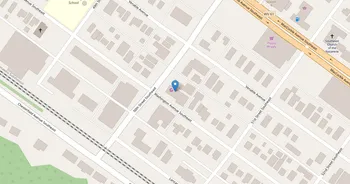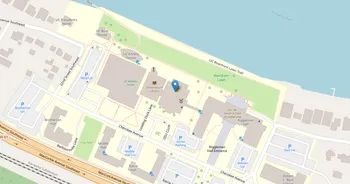Bluefield State University : Overview, Courses, Scholarships & Rankings
About Bluefield State University
Locals call Bluefield nature's air conditioned city, and Bluefield State sits in that cool mountain air. The university is known for practical academics in technical fields, health, business, and education, with faculty who keep classes focused and hands-on. Students use labs, studios, a solid library, tutoring and writing help, advising, and career coaching. There are places to build and tinker, and quiet corners when you need them.
Campus life feels down-to-earth and welcoming, with service projects, cultural groups, student media, and intramurals, plus quick escapes to nearby trails and rivers. The culture leans close knit and purpose driven, shaped by its HBCU heritage and Appalachian roots. Career prep shows up early through internships, clinical experiences, and employer visits, supported by regional alumni. Off campus, you'll find a friendly downtown, cafés, arts, and community partners for work, volunteering, and weekend breathing room. Homecoming traditions keep the rhythm.
Key Institutional Details
Contact & Profile
Academic & Institutional
Academic Programs & Fields of Study
Bluefield State University offers 22 degree programs across 9 major academic fields, graduating approximately 273 students annually. The most popular fields by graduate volume are Health (6 programs, 120 graduates), Eng. Technologies (5 programs, 50 graduates), Business (4 programs, 28 graduates), Liberal Arts (2 programs, 27 graduates) and Education (1 programs, 16 graduates). Explore program details, award levels, and graduate demographics below.
Health (6 programs, 120 graduates)
Healthcare Professions, Medical Sciences and Clinical Practice
| Program Name | Graduates | Gender Distribution | Award Levels | CIP Code |
|---|---|---|---|---|
| Registered Nursing | 86 |
|
Associate's
Bachelor's
|
51.3801 |
| Medical Radiologic Technology | 15 |
|
Associate's
|
51.0907 |
| Radiologic Technology | 10 |
|
Bachelor's
|
51.0911 |
| Health Administration and Management | 5 |
|
Bachelor's
|
51.0701 |
| Community Health Counseling | 3 |
|
Bachelor's
|
51.1504 |
| Medical Assistant | 1 |
|
Other Award
|
51.0801 |
Eng. Technologies (5 programs, 50 graduates)
Applied Engineering Technologies and Technical Support
| Program Name | Graduates | Gender Distribution | Award Levels | CIP Code |
|---|---|---|---|---|
| Civil Engineering Technology | 22 |
|
Associate's
Bachelor's
|
15.0201 |
| Mechanical Engineering Technology | 12 |
|
Associate's
Bachelor's
|
15.0805 |
| Electrical and Electronic Engineering Technology | 7 |
|
Associate's
Bachelor's
|
15.0303 |
| Industrial Engineering Management | 5 |
|
Bachelor's
|
15.1501 |
| Surveying Technology | 4 |
|
Other Award
|
15.1102 |
Business (4 programs, 28 graduates)
Business Administration, Marketing and Entrepreneurship
| Program Name | Graduates | Gender Distribution | Award Levels | CIP Code |
|---|---|---|---|---|
| Business Administration and Management | 24 |
|
Bachelor's
Master's
|
52.0201 |
| Office Management and Supervision | 2 |
|
Other Award
|
52.0204 |
| Accounting | 1 |
|
Other Award
|
52.0301 |
| Human Resources Management and Services | 1 |
|
Other Award
|
52.1099 |
Liberal Arts (2 programs, 27 graduates)
Liberal Arts Education, General Studies and Humanities
| Program Name | Graduates | Gender Distribution | Award Levels | CIP Code |
|---|---|---|---|---|
| General Studies | 24 |
|
Bachelor's
|
24.0102 |
| Humanities Studies | 3 |
|
Bachelor's
|
24.0103 |
Education (1 programs, 16 graduates)
Educational Sciences, Teaching Methods and Pedagogy
| Program Name | Graduates | Gender Distribution | Award Levels | CIP Code |
|---|---|---|---|---|
| Elementary Education | 16 |
|
Bachelor's
|
13.1202 |
Computer & IT (1 programs, 11 graduates)
Computer Science, Information Technology and Cybersecurity
| Program Name | Graduates | Gender Distribution | Award Levels | CIP Code |
|---|---|---|---|---|
| Computer and Information Sciences | 11 |
|
Bachelor's
|
11.0101 |
Security & Safety (1 programs, 10 graduates)
Emergency Management, Law Enforcement and Public Safety
| Program Name | Graduates | Gender Distribution | Award Levels | CIP Code |
|---|---|---|---|---|
| Criminal Justice and Safety Studies | 10 |
|
Bachelor's
|
43.0104 |
Interdisciplinary (1 programs, 8 graduates)
Cross-Disciplinary Studies and Integrated Research Programs
| Program Name | Graduates | Gender Distribution | Award Levels | CIP Code |
|---|---|---|---|---|
| Biological and Physical Sciences | 8 |
|
Bachelor's
|
30.0101 |
Social Sciences (1 programs, 3 graduates)
Sociology, Anthropology and Political Science Studies
| Program Name | Graduates | Gender Distribution | Award Levels | CIP Code |
|---|---|---|---|---|
| Social Sciences | 3 |
|
Bachelor's
|
45.0101 |
Admission Requirements & Test Scores
Comprehensive overview of admission criteria, standardized test score ranges, and application requirements for prospective students at Bluefield State University.
Application Requirements
Data based on IPEDS for 2022-2023 academic year. Test score ranges represent the middle 50% of admitted students (25th-75th percentile). Requirements may vary by program.
Tuition, Fees & Estimated Costs
Overview of tuition rates, housing, and other annual education expenses for undergraduate and graduate students
Financial Aid & Student Support
Summary of scholarships, grants, student loans, and financial aid statistics for undergraduate students
Student Success Metrics
Graduation rates and post-graduation earnings to help assess student outcomes and long-term value of education.
Loan Burden & Repayment Outcomes
Breakdown of loan repayment rates and student debt levels by income and dependency status.
Frequently Asked Questions
Find answers to the most common questions about Bluefield State University
How much does it cost to attend Bluefield State University?
The annual tuition at Bluefield State University is $10,240 for in-state students and $17,560 for out-of-state students. When including room and board, books, and other expenses, the total estimated cost is approximately $27,067 for in-state students and $34,387 for out-of-state students. Additional costs include room and board $11,327 and books and supplies $1,200.
Data based on IPEDS program completions for 2022-2023 academic year. Tuition and cost estimates are approximate and may not include all fees, personal expenses, or transportation costs.
What academic programs and degree levels does Bluefield State University offer?
Bluefield State University offers 22 academic programs across 9 major fields of study, with available degree levels: Associate's, Bachelor's, Master's, Other Award.
Most popular program areas include:
- Healthcare Professions, Medical Sciences and Clinical Practice (6 programs)
- Applied Engineering Technologies and Technical Support (5 programs)
- Business Administration, Marketing and Entrepreneurship (4 programs)
- Liberal Arts Education, General Studies and Humanities (2 programs)
- Educational Sciences, Teaching Methods and Pedagogy (1 programs)
Data based on IPEDS program completions for 2023-2024 academic year. Numbers reflect programs where students graduated, not all offered programs.
What is the acceptance rate for Bluefield State University?
Bluefield State University has an 87.2% acceptance rate and a 34.4% yield rate, making it moderately selective.
Admission statistics breakdown:
- Total applicants: 720
- Students admitted: 628
- Students enrolled: 216
Data based on IPEDS for 2022-2023 academic year. Admission statistics may vary by program and application cycle.
What financial aid and scholarships are available at Bluefield State University?
Bluefield State University provides financial aid to 22% of first-time, full-time students, with average grants of $9,634 and average loans of $8,193.
Average financial aid amounts by type:
- Pell grants: $4,794
- State/Local grants: $3,961
- Institutional grants: $6,366
- Federal loans: $6,990
The university supports 280 students with grants and 184 students with loans annually.
Data based on IPEDS for 2022-2023 academic year. Financial aid amounts and percentages may vary by program, enrollment status, and individual circumstances.
What is the average salary for Bluefield State University graduates?
Bluefield State University graduates earn a median salary of $35,030 after 6 years and $38,217 after 10 years.
The salary range 10 years after graduation spans from $18,934 (25th percentile) to $61,745 (75th percentile), with top earners reaching $63,200 (90th percentile).
Data based on IPEDS for 2022-2023 academic year. Salary data reflects graduates who received federal financial aid (approximately 60% of all graduates). Actual earnings may vary significantly based on program, location, and individual circumstances.
Related Universities




Found something useful? Help others discover it too! Share with friends, on social media, or save for later - every share helps someone find the information they need.